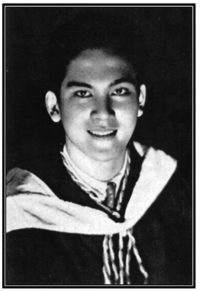Imperial headquarters has announced that the Americans have suffered 25,000 casualties on Yiojima and to those who can read between the lines it is plain that the battle is coming to an end. As a result of this new setback a further effort has been made to solve the question of coordination between the high command and the administration, which has plagued Japan’s war effort since the China affair. Apparently, when Koiso took office he advanced three proposals on the subject. He would attend conferences at imperial headquarters as premier, he would return to active service and thus adjust differences himself, or the issue could be solved “according to an entirely new conception”. This last alternative was the first taken. A supreme council for war guidance was established but, according to the Asahi, it was “merely a sort of conference and so far has gone little beyond the adjustment of differences between the high command and the administration. It was by no means adequate to cope with the present stage of fierce war.” Consequently the first alternative will now be resorted to; Koiso will be allowed to sit in at imperial headquarters conferences; “he will have a voice in matters under discussion in the same way that the chief staff officers have and partake in the supreme guidance of the war.” The measure was taken “at the command of His Majesty the Emperor. The same step,” recalls the Asahi, “was taken at the time of the Sino-Japanese and Russo-Japanese wars when the Premiers Ito and Katsuura attended the deliberations of imperial headquarters.” It only remains to add that the more realistic Tozyo solved the problem in his own characteristic fashion by combining in himself the powers of prime minister, war minister, munitions minister, and chief of staff. He was overthrown by jealous generals on the charge of dictatorship. Whatever his shortcomings, Tozyo had a better understanding of total war.

Leon Ma. Guerrero
(March 24, 1915 — June 24, 1982). Lawyer, journalist and diplomat. Served in USAFFE (later, USFIP) in the press relations staff, then assigned to Corregidor; upon surrender of USFIP and release from internment, served as a technical assistant to Jorge B. Vargas in the Philippine Executive Commission, then resumed broadcasting (station PIAM) under the same pseudonym he had used prior to the Japanese Occupation: Ignacio Javier. He then joined the diplomatic service of the Second Republic of the Philippines, assigned to the Philippine embassy in Tokyo under Jorge B. Vargas, ambassador.
All Posts